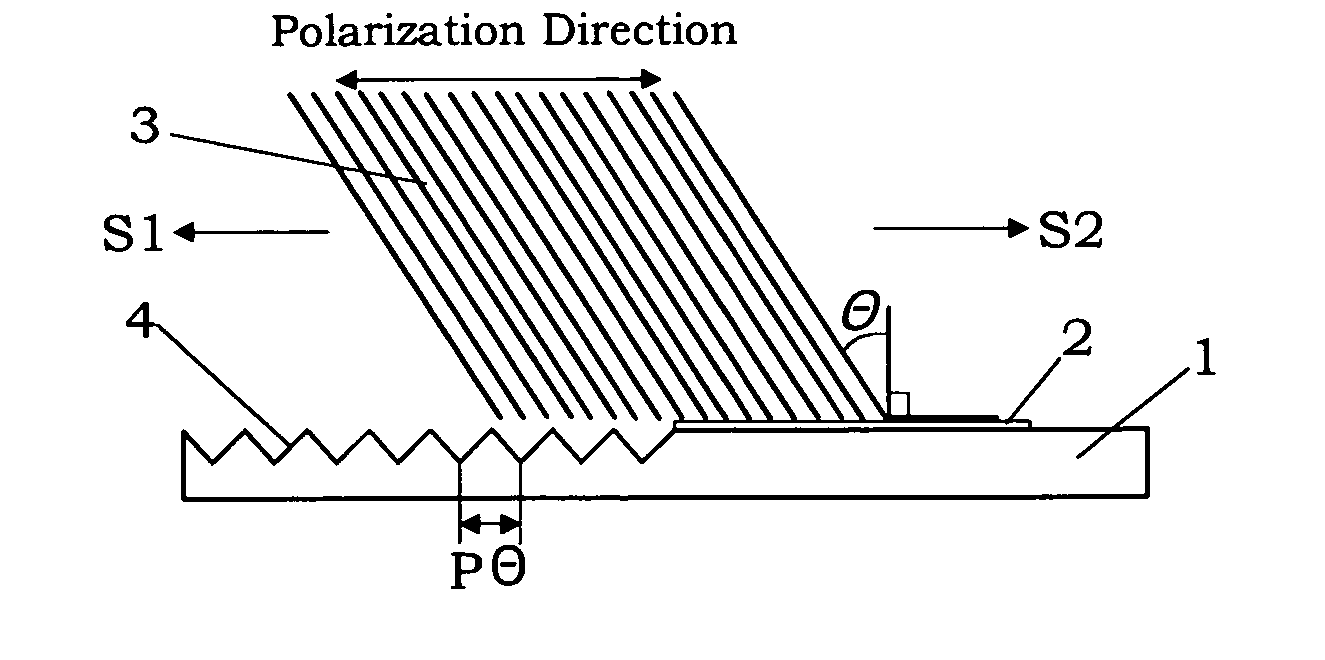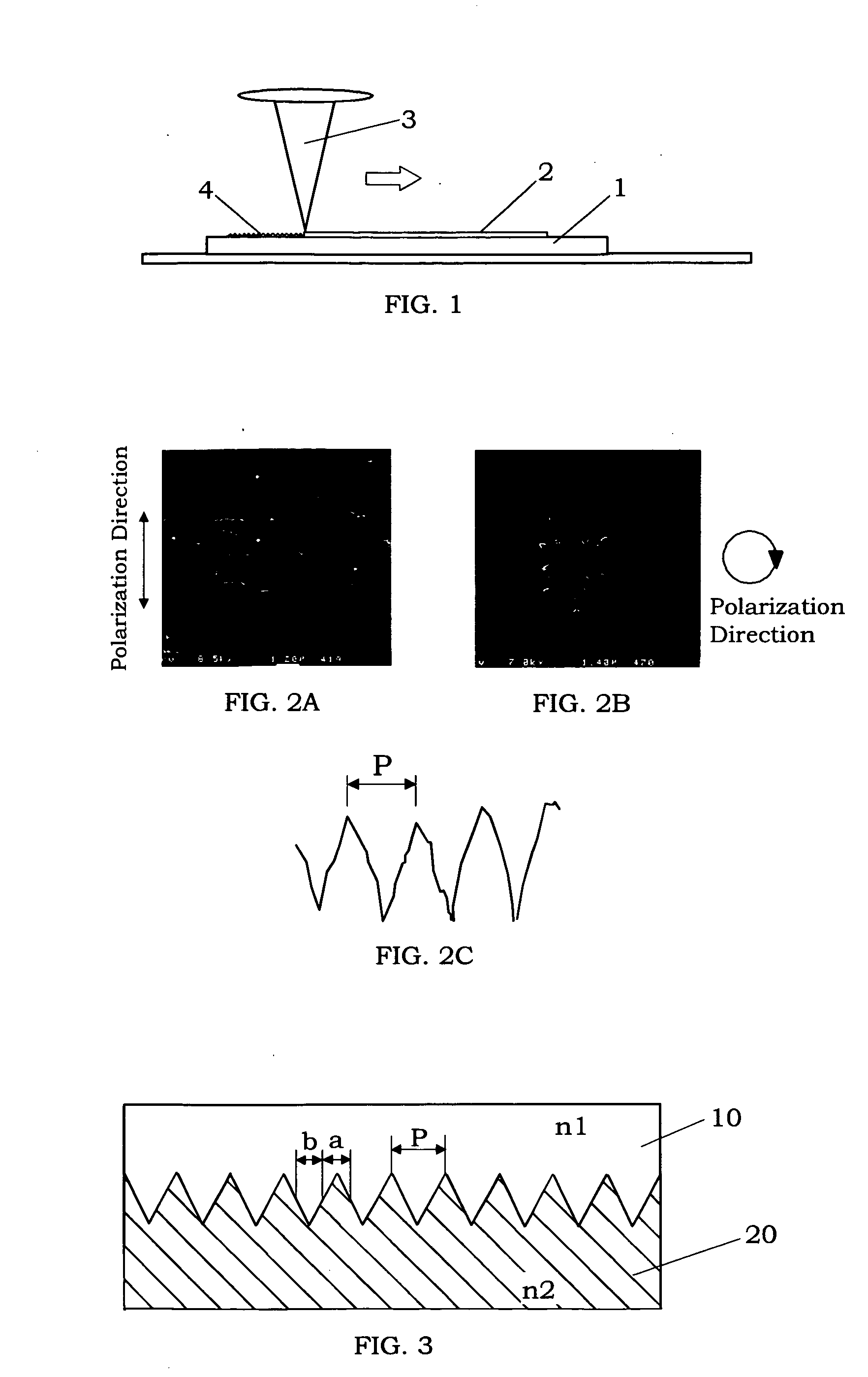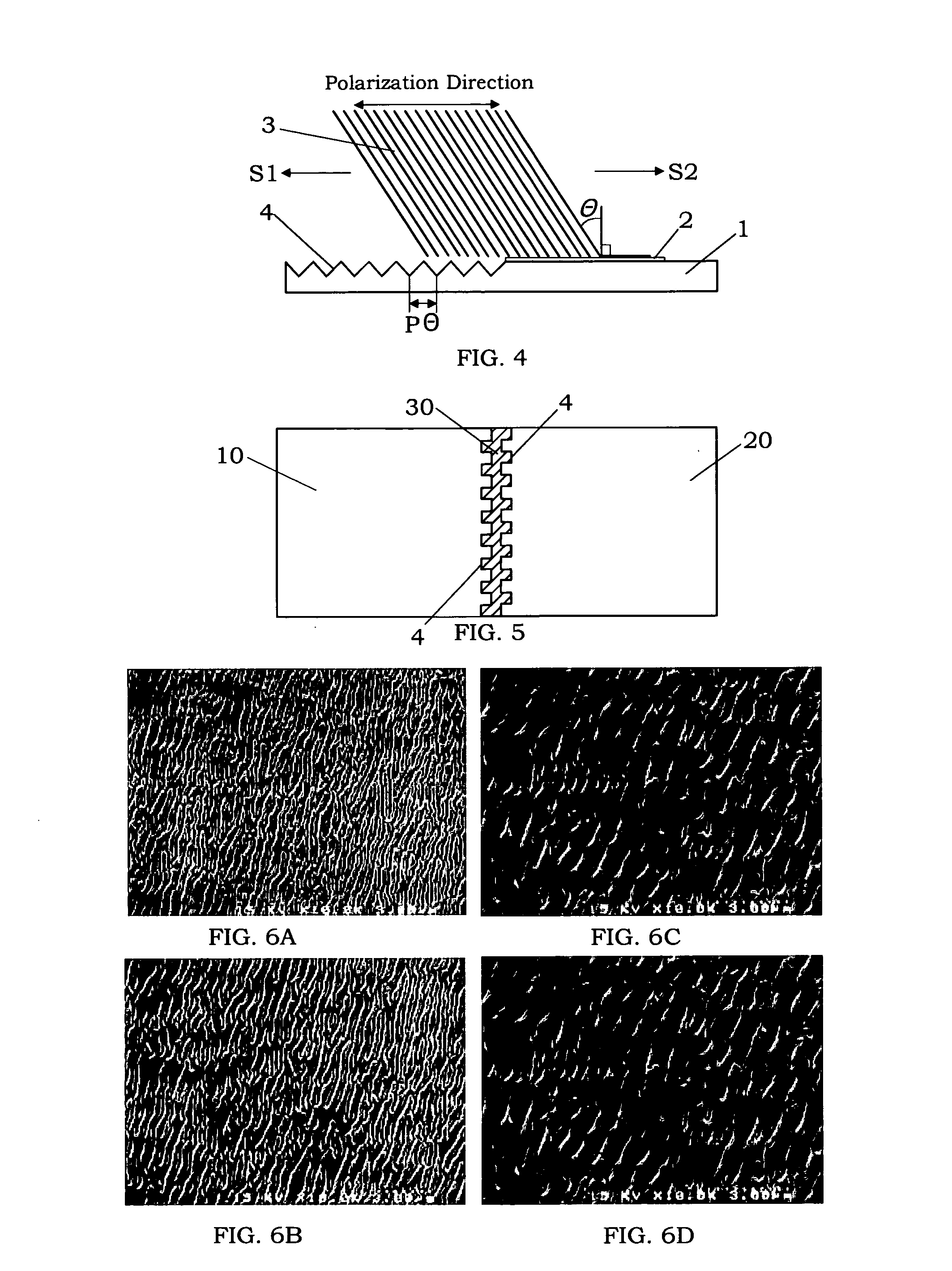Laser surface treatment
- Summary
- Abstract
- Description
- Claims
- Application Information
AI Technical Summary
Benefits of technology
Problems solved by technology
Method used
Image
Examples
examples 1 to 12
[0038] In each of Examples 1 to 12, the following laser surface treatment was performed. That is, a sapphire single crystal was used as the substrate. A cupper film was formed on the substrate by a conventional sputtering method to have the thickness listed in Table 1. Then, as shown in FIG. 1, the copper film was removed from the substrate by irradiation of an ultra-intense short-pulse laser beam having a pulse width of 100 fs under a reduce pressure of 0.01 Pa with the laser energy density listed in Table 1. A periodic interval of a resultant fine periodic structure was measured by using scanning electron microscope (SEM). Results are shown in Table 1. In addition, SEM photographs of the fine periodic structures formed in Examples 3, 6, 9 and 12 are shown in FIGS. 6A to 6D. The laser beam used in these Examples is a linearly-polarized laser. Therefore, the fine periodic structure has fine elongate asperities extending in a direction perpendicular to the polarization direction, as ...
examples 13 and 14
[0039] In Examples 13, a copper film is formed on a fused silica substrate, and then the copper film is removed from the substrate by irradiation of an ultra-intense short-pulse laser beam having a pulse width of 100 fs, which is a linearly-polarized laser beam. Similarly, the fine periodic structure of Example 14 was formed on the fused silica substrate by substantially the same procedures as Example 13 except for using a circularly-polarized laser beam. In these cases, a periodic interval of a resultant fine periodic structure is approximately 200 nm.
[0040] With respect to each of Examples 13 and 14, the transmission factor of the fused silica substrate was measured by use of two lights having wavelengths of 670 nm and 450 nm. In addition, the transmission factor of the fused silica substrate without the laser surface treatment was also measured as Comparative Example 1. Results are shown in Table 2. It can be understood from the results of Table 2 that the laser surface treatmen...
PUM
| Property | Measurement | Unit |
|---|---|---|
| Time | aaaaa | aaaaa |
| Time | aaaaa | aaaaa |
| Thickness | aaaaa | aaaaa |
Abstract
Description
Claims
Application Information
 Login to View More
Login to View More - R&D
- Intellectual Property
- Life Sciences
- Materials
- Tech Scout
- Unparalleled Data Quality
- Higher Quality Content
- 60% Fewer Hallucinations
Browse by: Latest US Patents, China's latest patents, Technical Efficacy Thesaurus, Application Domain, Technology Topic, Popular Technical Reports.
© 2025 PatSnap. All rights reserved.Legal|Privacy policy|Modern Slavery Act Transparency Statement|Sitemap|About US| Contact US: help@patsnap.com



